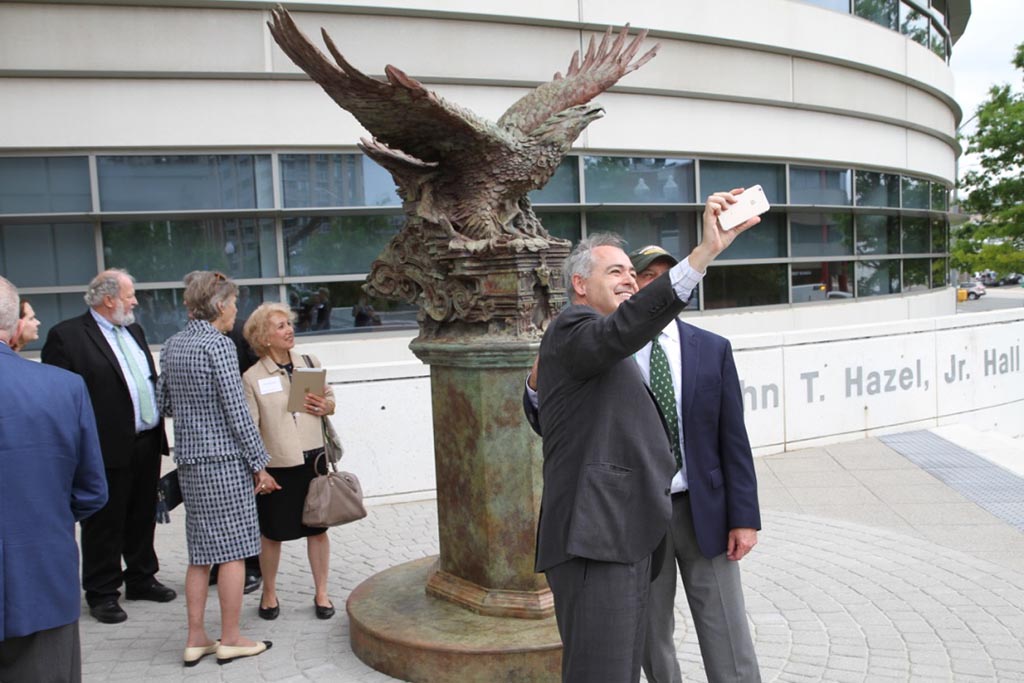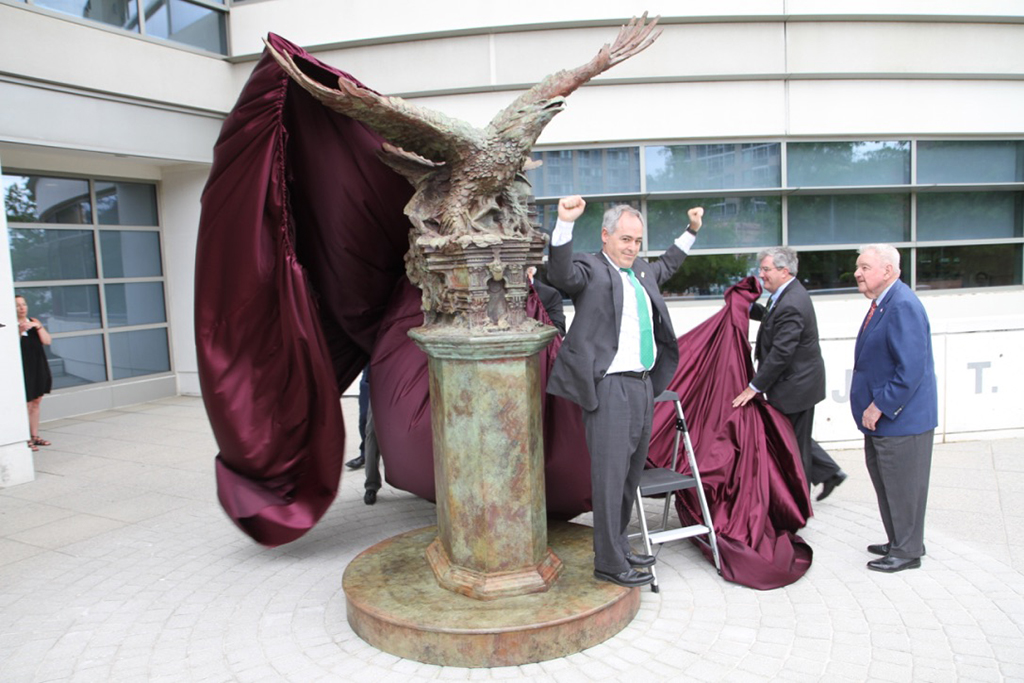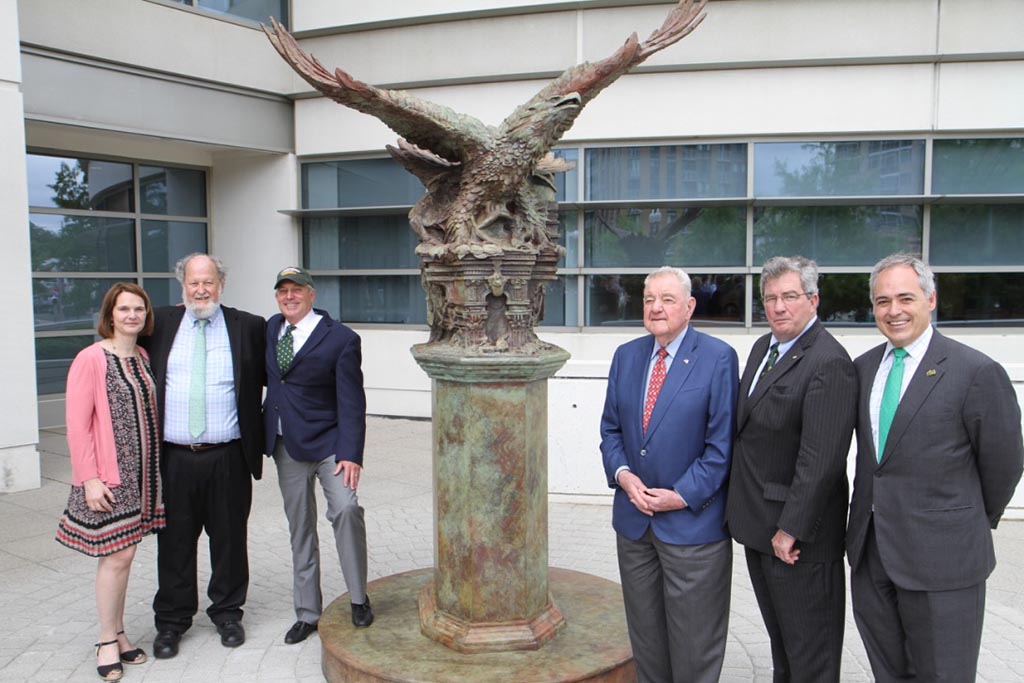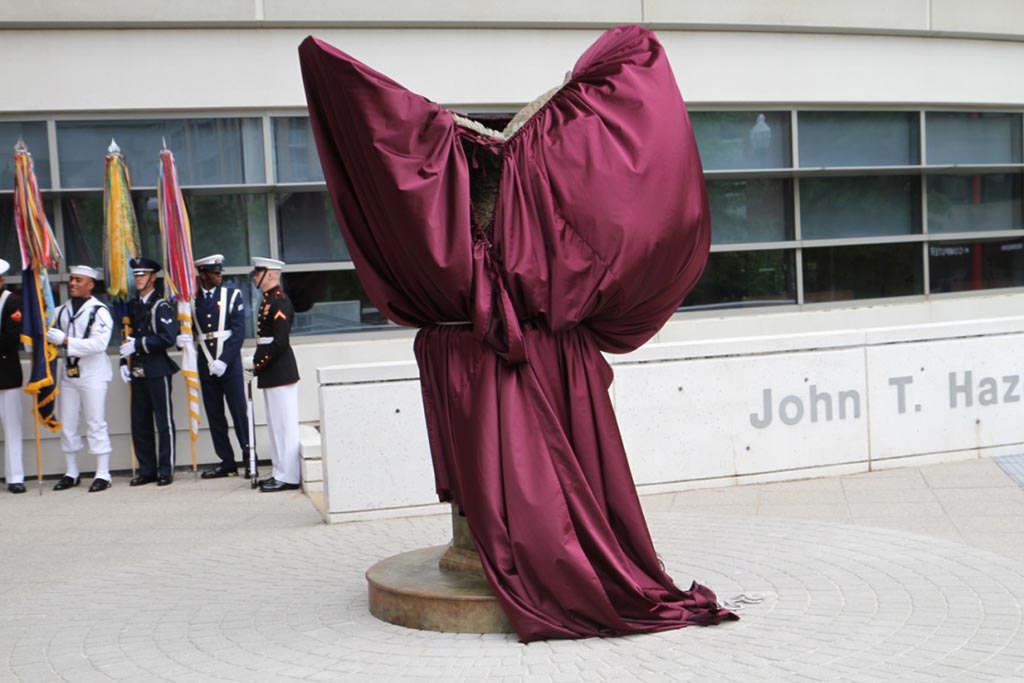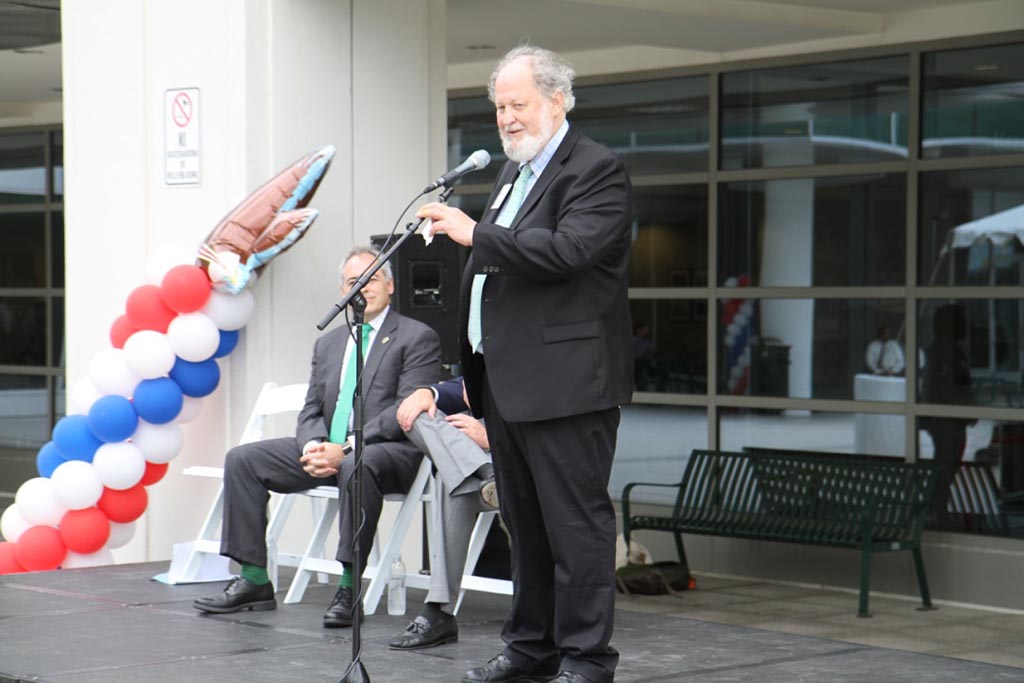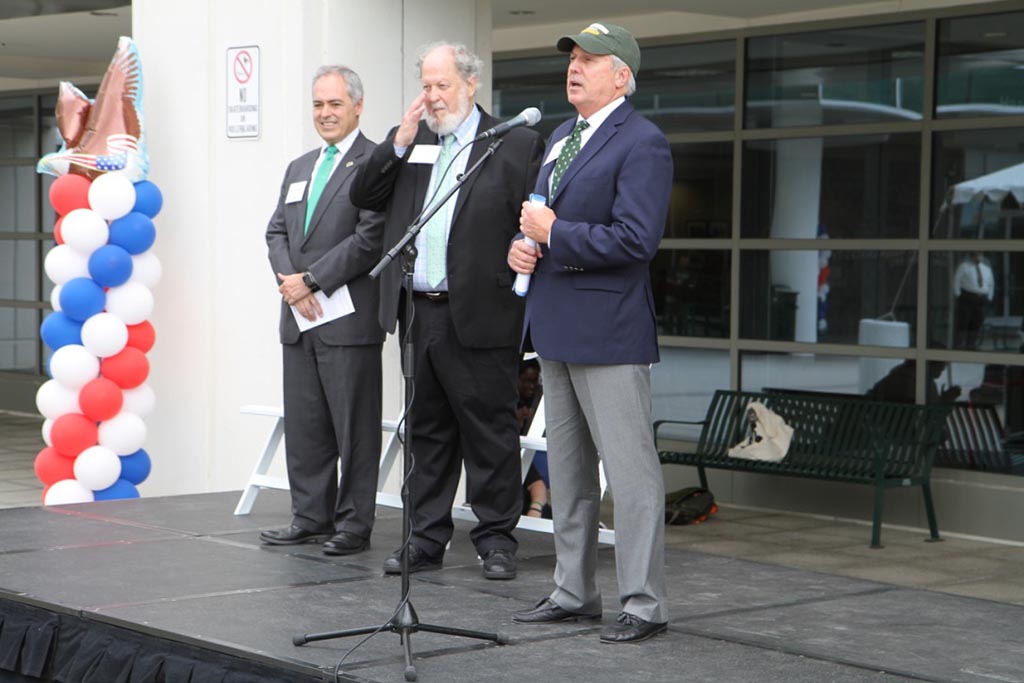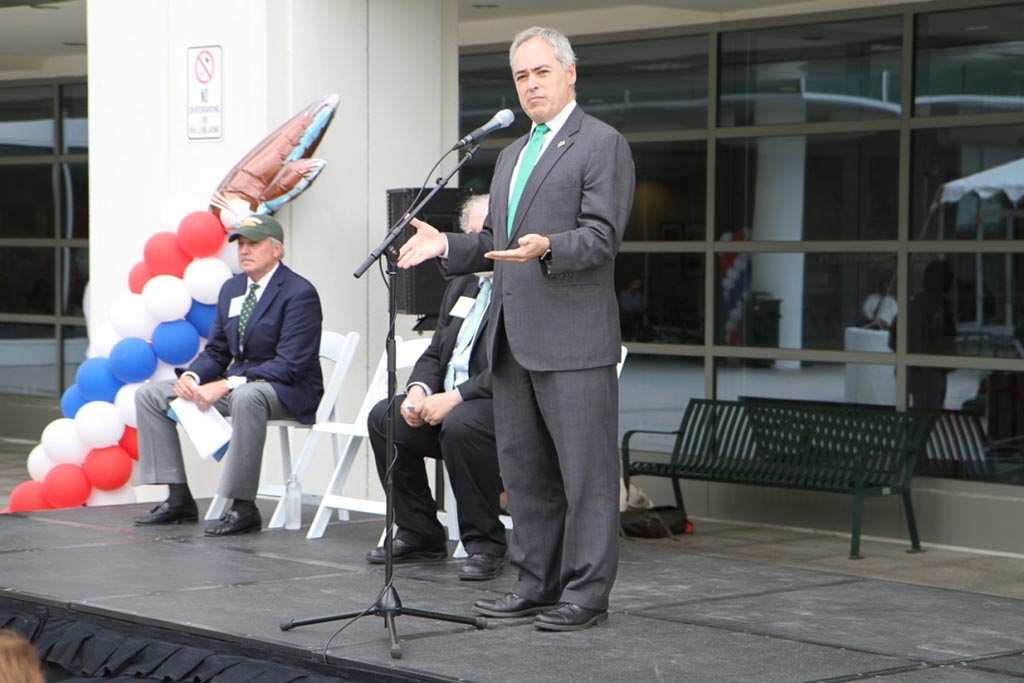More than 100 dignitaries, students, faculty and staff braved blustery conditions Monday for the unveiling of the Bill of Rights Eagle outside the Antonin Scalia Law School on George Mason University’s Arlington campus.
Cast in bronze by sculptor Greg Wyatt, the 4,300-pound eagle has a seven-foot wingspan and was dedicated as part of the university’s Law Day celebrations.
It shows an American eagle standing on top of the Bill of Rights, protecting them with its enormous wings. In an interview after the ceremony, Wyatt said it was symbolic of standing against oppression and for freedom.
“It’s a permanent memorial to free speech and artistic practice, unlimited by your format and materials,” he said. “It’s something you want to pass from one generation to the next.”
Wyatt initially presented the statue in plaster in the U.S. Senate’s Russell Office Building in 1989, before it moved two years later to the southwest corner of the courtyard at Harvard University, near Dudley House.
After five years outside Dudley House, it moved to the courtyard by Harvard’s Winthrop House, just outside the suite where former President John F. Kennedy lived and studied. A renovation in that area forced it to return to Wyatt’s studio, then the law school was recommended for its new home.
And while university officials said the move was not because of namesake George Mason IV’s role as the author of the Bill of Rights, it is fitting nonetheless.
“I think Harvard Yard was an okay place for the Bill of Rights Eagle. I think the U.S. Senate was a better place,” said GMU president Angel Cabrera. “But I cannot think of a better place for the eagle than the law school that carries the name of the author of the Bill of Rights.”
“I just get chills,” said law school dean Henry Butler. “Here we are at the university named for the father of the Bill of Rights, being given an eagle named for the Bill of Rights.”
Wyatt has designed two other similar eagles on display in the U.S.: one with a three-foot wingspan on the campus of Vanderbilt University in Tennessee and another with an 18-foot wingspan in the north courtyard of the State Department in the District, installed in 2000.
He said his research involved learning about how eagles are put together, from their bone structure to feather count and where their joints are.
“That kind of research is expected,” Wyatt said. “What’s not expected is adding something to the nation’s symbol. What that means in this instance is the idea that our freedom of speech and production and artists are showcase for the benefits of the constitutional rule of law under which all of us derive these precious freedoms.”


